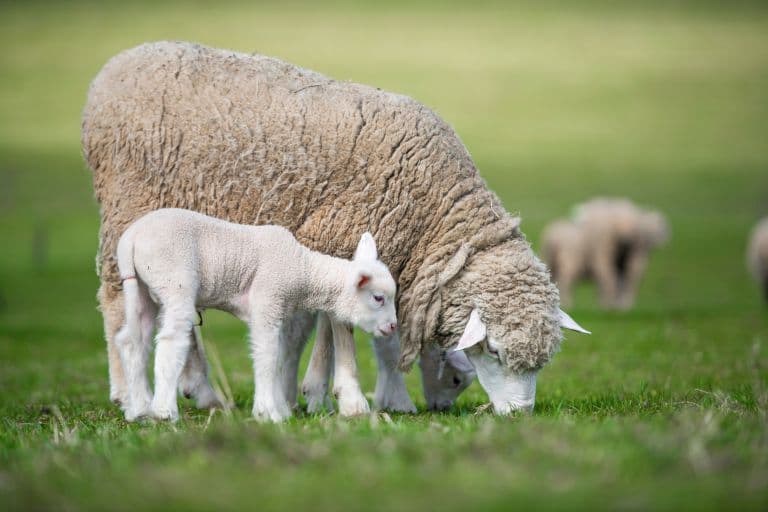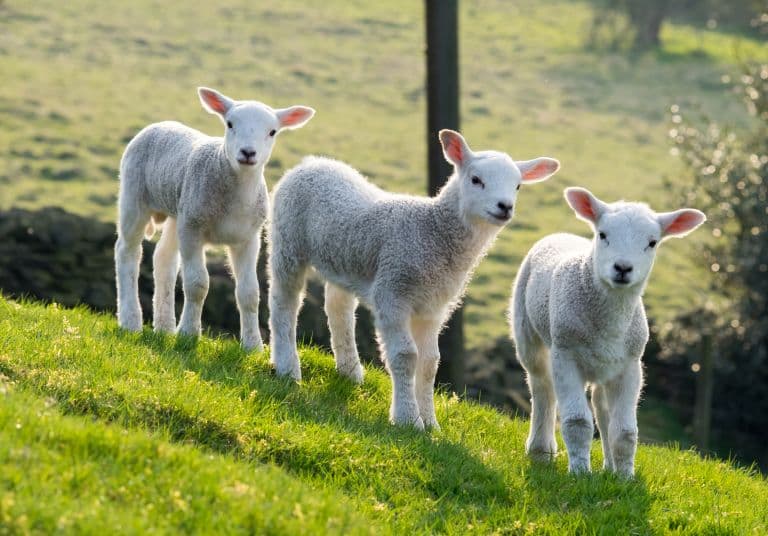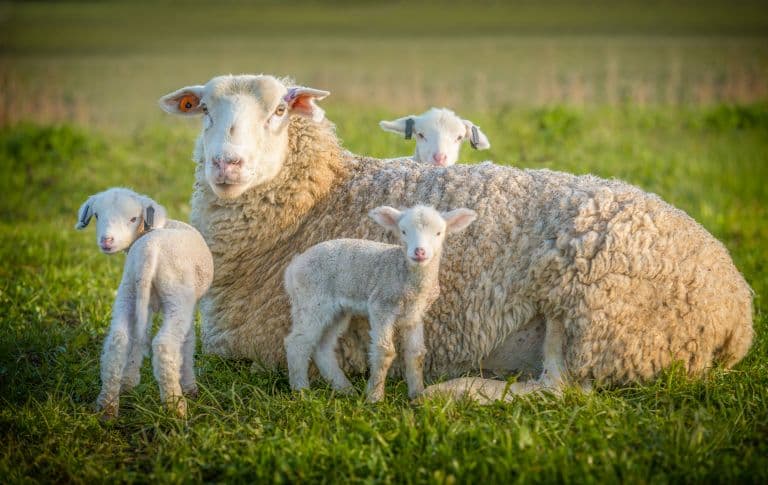Some people spend their entire lives under the sodium glare of the city lamps, their only experience with lambs and sheep coming from the supermarket shelves and rush-hour train station, respectively.
Lambs, as we all know, are food (and a metaphor for the unresolved childhood trauma of Clarice Starling), and sheep are those cloud-like animals that you see dotted about on fields and in kids’ books that say “Baaa”.
But there has to be more to it than this. There are more similarities between sheep and lambs than some might be familiar with.

Lets find out the differences between lamb and sheep.
1. Lambs are baby sheep
This is the most obvious one and usually ends the conversation pretty quickly. A lamb is the name given to a sheep that just came out of another sheep. Lambs are juvenile sheep, in the same way that fawns are baby deer, or calves are baby cows.
Calling it a lamb serves a few useful purposes: first, it distracts from the true source of our food and layers in a level of abstraction that makes it easier to swallow (we don’t eat cows, we eat beef; it’s not the Steatotic liver of a diseased goose, it’s foie gras), though this is likely more convenient than intentional.
Secondly, it’s a necessary industrial term. It’s strictly, legally defined as a ram, sheep, or ewe who is under the age of one year.
But “lamb” can also be a verb. Nobody’s ever sheeping anything (at least they shouldn’t be), but lambing happens each time a baby sheep is produced. There’s a lambing season, lambing tongs and a useful lambing prolapse harness that you can buy for the season if you’re so inclined.
Sheep, on the other hand, are the poor creatures doing the prolapsing, especially when they’re poorly bred, too weak, or not allowed enough exercise, which is a category most of the industrial farm animals fit into.
However, sheep are still by no means adults, at least, not necessarily. A lamb might stop being a lamb at one year but it is far from mature at that age. Sheep don’t get a full set of adult teeth until they’re up to four years old. More on that later! 1

2. Sheep can be defined further
Technically, lambs can too, but saying “Ram lam” makes it sound like you’re about to break into an annoying ‘50s Classic by The Edsels, and that’s never a good idea.
Sheep are commonly referred to more specifically: male sheep are rams, female sheep are ewes, and then there are more than 200 (some say more than 1000) breeds of the animal from all over the world.
3. Sheep are heavier
This one’s almost too obvious to mention, but again, this is a metric used in the meat market. A healthy lamb is usually taken to slaughter at about 60kg or 140lb.
Adult ewes can weigh up to 100kg (220 lb), if they make it that far, and the lucky few surviving rams can get up to 160kg (350 lb) in some instances.
4. Not many people eat sheep
The saying “mutton dressed as lamb” refers to something of diminished quality posing as top-notch, and in this case, the mutton refers to the meat of a sheep, which is gristly, tough and stronger in flavour than that of a fresh little baby sheep, otherwise known as a lamb.
Mutton is not a popular food for all the reasons just mentioned, so the sheep meat found in markets and supermarkets comes typically from lambs of only around 6 to 8 months old.
Spring lambs don’t make it nearly as long as that, and are killed at around 3 months old, or roughly 2 or 3 weeks after weaning. 2

5. Lambs don’t produce much wool
Lamb wool is just about enough to keep the lamb warm, so there isn’t anything for farmers to take without killing it first. Lambs are also pretty tiny, so their yield would reflect this, too.
In 2022, there were around 1.3 billion sheep farmed, many for wool, and each adult sheep can yield about 4.5kg of raw material per year or 10 meters of fabric. This is enough to cover one large sofa, and needs to come from an adult sheep.
Lambs produce very little wool and aren’t farmed specifically for that, but their fur is very fine and so is sought after as a by-product of the meat they produce. 3
6. Sheep are smarter
The word sheep is often used to refer to someone who is unintelligent and sort of follows the herd without thinking, and this is pretty unfair, but it also serves a purpose. In the psychology of eating meat, it’s suggested that people are happier to eat animals to whom they attribute lower mental faculties.
Sheep, however, are unfairly lumped with this stereotype. As prey animals for almost everything, they’re understandably skittish, and this can make them appear a bit stupid but researchers have discovered another inconvenient truth: sheep possess sophisticated problem-solving and learning abilities.
Pigs are well known as some of the smartest animals on land, and it’s said that sheep come in second only to pigs in the Animal Farm rankings when it comes to smarts.
Lambs, on the other hand, really are dumb. They’re babies, so they make terrible decisions. 4

7. Lambs still have their milk teeth
Being so young, lambs typically have their baby teeth still in. They’re born without teeth, grow their first set, and then begin to lose them at around the weaning time of 10 to 14 weeks old. The first two adult teeth come in at around a year old, but most lambs won’t make it to that age.
So, you can usually age a sheep by looking at its teeth. The adults don’t have a full set until they’re 3-4 years old.
Final Thoughts
So there you have it – lamb versus sheep!
Lambs and sheep are in an infinite loop in which they continually produce each other over time. This is less complicated than it sounds, and the differences are pretty simple: lambs come out of sheep, and then (if they’re not slaughtered soon after birth) they become sheep.
But ultimately, they’re the same thing. The cutoff for a lamb is around a year, but that’s not a statement on the maturity of the animal; it’s more a useful limit for the meat industry to determine the optimal condition of their product for selling.
Sheep still take another three or four years to mature, and will live up to around 16 years if treated well. Sadly, this rarely happens, and even the wool industry is rife with abuse, and neglect and when they become uneconomical to maintain, they’re killed – usually by around 6 to 8 years old.
Lambs are smaller, dumber, with baby teeth and fine fur. They’re also incredibly cute and playful like puppies with spindly antelope legs. But then, sheep are cute too. They’re curly-haired fluffballs with surprising amounts of intelligence and are great at keeping your lawn under control. 5
Fact Sources & References
- https://agriculture.vic.gov.au/support-and-resources/newsletters/sheep-notes-newsletter/autumn-2022/the-prolapsing-ewe
- https://rhea.tennessee.edu/wp-content/uploads/sites/145/2020/12/Lamb_from_Farm_to_Table.pdf
- https://iwto.org/sheep-wool/
- https://www.iamcountryside.com/sheep/how-smart-are-sheep/
- https://www.woolfacts.com/wool-and-animal-welfare/slaughterhouses/
